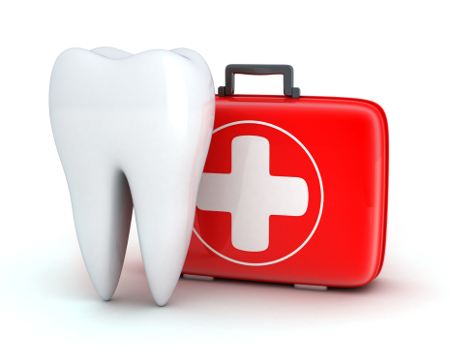Dentures That Feel Natural, Look Beautiful.
Wisdom Tooth Extraction Day 4 - Is That a Dry Socket? How to Tell, Treat, and When to See a Dentist
Severity:
Teeth Problems:
Quick visual assessment (from the photo)
-
I can see the extraction site (a visible “hole”) behind the last visible tooth with surrounding red tissue.
-
I don’t clearly see exposed white bone in the socket in this image — which is a common visual sign of a dry socket — but the photo is close and a bit out of focus, so that isn’t definitive.
-
Some redness and a fairly open socket 4 days after extraction can still be within normal healing, especially if pain is improving or mild.
What a dry socket (alveolar osteitis) usually looks/feels like
-
Worsening or severe throbbing pain starting about 2–4 days after extraction (often worse than immediate post-op pain).
-
Pain may radiate to ear, eye, temple or neck on the same side.
-
The extraction site looks empty or bone-covered (loss of normal clot).
-
Bad taste or foul odor from the socket.
-
Reduced swelling but increased pain around the socket (unlike infection, which often causes persistent swelling and fever).
From what you wrote — day 4, pain but “not super badly,” dentist checked yesterday and said it looked fine — that leans toward normal healing. If your pain is stable or improving and there’s no foul smell or radiating severe pain, it’s likely not a classic dry socket.
Timeline — what to expect
-
First 48–72 hours: blood clot forms and early healing. Pain tends to peak then and should gradually improve.
-
Days 3–7: soft tissue begins epithelializing; pain usually decreases. Day 4 is a common time for dry socket to show up if it’s going to.
-
7–14 days: most soft tissue covering and comfort improves substantially.
-
Weeks–months: deeper bone fills more slowly; complete bone remodeling can take months.
If everything is normal, you should see steady improvement over the next several days and much calmer pain by day 7–10. If symptoms persist or worsen at day 14, you should be re-evaluated.
What to do now — immediate self care (safe, practical)
-
Gentle warm saline rinses: after 24 hours post-op, rinse gently with a warm saltwater solution (½ tsp salt in 250 ml / 8 oz warm water) 4–6 times a day, especially after meals. Don’t swish forcefully.
-
Avoid things that dislodge clot: no smoking, no straws, no vigorous spitting, no poking the socket with cotton swabs/brushes.
-
Pain control: take analgesics as directed by your dentist. For most people: ibuprofen (200–400 mg every 4–6 hours as needed, max per product instructions) ± paracetamol/acetaminophen. Follow dosing and any medical restrictions.
-
Oral hygiene: keep the rest of your mouth clean — brush other teeth gently and rinse as above.
-
Soft diet: avoid hard/crunchy food near the socket.
-
Cool/ice: only for swelling in the first 24–48 hours — 15 minutes on/off externally.
When to suspect dry socket or infection — seek urgent care/return to dentist if:
-
Pain worsens after day 2–3 and becomes severe or radiates to ear/temple.
-
You can see exposed bone in the socket (bright white/ivory bone).
-
Persistent foul odor or bad taste that doesn’t improve with rinses.
-
Marked swelling, fever, pus, or difficulty breathing/swallowing — go to emergency care.
-
Pain still severe or interfering with sleep/eating by day 7–10 or nothing improved by day 14.
What your dentist/clinic may do if it is a dry socket or infection
-
Dry socket: dentist often irrigates the socket to remove debris and places a medicated dressing (e.g., eugenol containing pack or other dressing) to reduce pain; repeated dressing changes may be needed until it heals. Analgesics and local care usually resolve it in days.
-
Infection: if there’s clear infection (pus, swelling, fever), dentist may prescribe antibiotics (e.g., amoxicillin) and drainage if needed.
-
Rarely, if healing is very delayed or there are systemic signs, further evaluation (imaging, culture) may be performed.
Risks and things that can make healing take longer
-
Smoking or vaping, oral contraceptive use, poor oral hygiene, trauma at extraction, and some medical conditions (diabetes, immune suppression) increase risk of dry socket or delayed healing.
-
If untreated, a dry socket causes prolonged pain and delayed closure; infection left untreated can spread — but prompt dental care normally resolves both.
If this takes 14 days
-
If, after 14 days, the socket is still very painful, visibly open with exposed bone, or there are signs of infection, the issue should be escalated: your dentist will likely clean the socket and place dressing and possibly give antibiotics. If still unresolved, they may investigate further (radiograph or referral).
Practical next steps for you (concise)
-
Continue gentle warm saline rinses, avoid smoking/straws, take pain meds as needed.
-
Monitor: is pain improving day by day? Any foul smell, fever, or increasing swelling?
-
If anything suggests dry socket or infection (see red flags above) — go back to your dentist now. You wrote they checked yesterday and said it’s fine — that’s reassuring; if you remain worried, book a recheck or urgent visit.
-
If you want a same-day urgent option, use your directory: https://cebudentalimplants.com/map-dental-clinic to find the nearest clinic for an in-person check.





